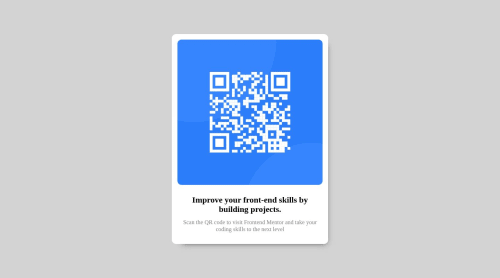Submitted over 2 years agoA solution to the QR code component challenge
Responsive Image using max-width
nuxt, sass/scss, vite, vuetify, bem
@MikeLee0358

Solution retrospective
what is the best way to handle with image and font-size RWD? I tried to limit the container to stop growing up.
Code
Loading...
Please log in to post a comment
Log in with GitHubCommunity feedback
No feedback yet. Be the first to give feedback on MikeLee0358's solution.
Join our Discord community
Join thousands of Frontend Mentor community members taking the challenges, sharing resources, helping each other, and chatting about all things front-end!
Join our Discord